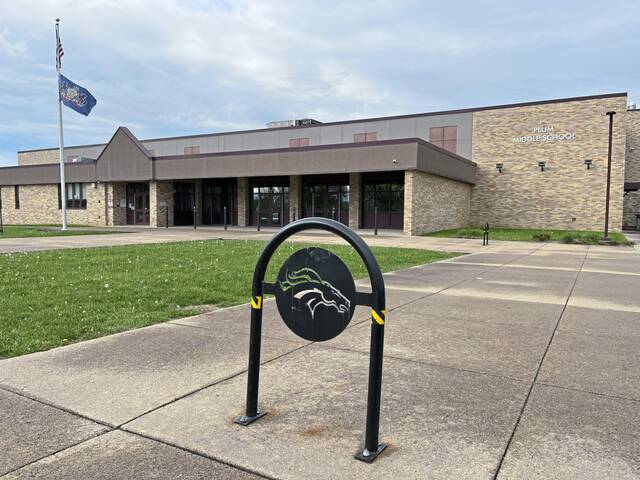Plum school renovation options could come with tax increase
Plum property owners could be facing another tax increase, this one to pay for school building projects.
On Tuesday, financial advisers gave Plum’s school board four options to pay for potential building projects. The options would add anywhere from $117 to $275 to the annual tax bill for residents of the district, based on the median assessed home value of $116,700.
Last month, Plum Council voted to boost borough taxes by 39%, amounting to an extra $216 a year for Plum’s median property owner.
Also last month, school officials outlined tax rate options for the 2024-25 school year that ranged from no increase to a 7.1% bump. The school board has until June 30 to adopt its budget for the coming fiscal year.
The proposed increases presented Tuesday range from about 1 mill to 2.36 mills, depending on how much the district borrows to pay for renovations.
Under the scenarios presented to the school board, the district would borrow between $29.3 million and $68.5 million.
The school board could opt for any — or none — of the scenarios.
Ryan Manzer, the district’s business manager, said they are not concrete plans.
“These scenarios were provided for illustrative purposes only to provide the board with additional information related to the financial impact of the projects discussed as part of the district’s facility studies,” Manzer said.
The school board is considering renovations and additions at the district’s middle school and at O’Block and Pivik elementary schools. Some of the work is aimed at giving the district space at O’Block and Pivik to bring back full-day kindergarten.
As presented by the district’s architect, Hayes Design Group, the proposed work at all three schools totals about $68.5 million — $38.8 million for the middle school, $28.2 million at O’Block and $1.5 million at Pivik.
Jamie Doyle, managing director of PFM Financial Advisors, reviewed scenarios that include two options for financing the full scope of the projects, another providing a smaller financing plan of $28.3 million and one that includes restructuring the district’s existing debt and borrowing $45.9 million.
If less than the full amount is borrowed, which work would be done and which would be removed has not been decided, according to Manzer.
“Each financing plan identified a related impact on the district’s millage, which ranged from 1.02 mills to 2.36 mills, which could be implemented over multiple years to reduce the financial impact over time,” he said.
The first scenario to borrow the full $68.5 million would have it impact the district’s budget all at once, Doyle said.
Another way to borrow the same amount would phase it into the district’s budget gradually, Doyle said. It would have the same 2.36-mill tax impact but in steps over five years.
The borrowings would be about $9.8 million in the first two steps, $29.5 million in the third, then about $9.8 million in the fourth and fifth steps. Millage impacts would be 0.32, 0.43, 1.12, 0.22 and 0.33.
The scenario to borrow $45.9 million also would see it done over five steps, with the first two being a restructuring of the district’s existing debt followed by two borrowings of about $9.8 million and a final one of $26.4 million. The phased-in tax impact amounts to 1.11 mills.
The scenario to borrow the least amount, $29.3 million, would require the district to prioritize its most needed projects, Doyle said. It would see it done in three steps of $9.8 million each with a total tax impact of 1.02 mills.
The district’s outstanding debt totals about $123.8 million, which will require local taxpayers to pay about $111.9 million, according to Doyle’s presentation.
As part of its consideration, Superintendent Rick Walsh said board members will be taking walk-throughs of the schools in coming weeks.
In February, the board will receive an updated demographic study from Davis Demographics, which Manzer said will update future projected enrollments. A budget workshop will follow in March.
School board President Angela Anderson said the board recognizes there are significant long-term costs associated with maintaining the district’s facilities.
“We will continue to gather additional information in the coming months regarding our district’s enrollment trends and operational budgetary needs,” she said. “This additional information will allow us to carefully consider the most efficient use of our resources in a fiscally responsible manner to address the long-term capital needs which will have long-lasting impacts on our students, educators and school district community.”
Brian C. Rittmeyer, a Pittsburgh native and graduate of Penn State University's Schreyer Honors College, has been with the Trib since December 2000. He can be reached at brittmeyer@triblive.com.
Remove the ads from your TribLIVE reading experience but still support the journalists who create the content with TribLIVE Ad-Free.

